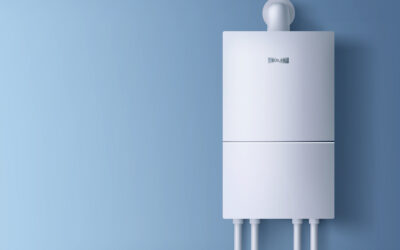The search for a method to enjoy instant hot water when you use the shower or faucet is familiar. However, it may not be as common as a pursuit of the meaning behind life. The thought that instant hot water is possible has been in the views of almost everyone who has seen water flow down the drain while waiting for it to warm up.
It’s a hassle; of course, it is a hassle to wait until you get the required water. It may make you feel guilty when you realize how much water has to get lost. Though likely not enough responsibility to take a refreshing shower early in the morning.
Why Does Hot Water Take So Long to Get to My Faucet?
To understand how to instantly hot water, let’s begin by understanding why it can take an incredibly long time to heat the water from the tap. While the age of the water heater and efficiency could be an element, along with the degree of insulation in pipes in a house but the main reason is pretty straightforward:
The cold water in the pipes has to be flushed away before hot water can reach the faucet.
When you leave the water heater, the hot water has to travel through a network of pipes before it reaches the faucet. The hot liquid is the water that has been cooling in the lines with cold water since the last time you requested hot water.
So What Are the Options for Getting Hot Water More Quickly?
Every homeowner’s needs are unique, so the options do not come in “one size is perfect for all. Here are four methods to receive immediate water at the faucet.
1: Recirculating Hot Water Systems
With the standard tank water heater, by turning the knob, the faucet begins the process of heating water to make its way through the pipes. What happens if the hot water inside the lines has already heated by the time the request is received?
In that situation, hot water is available right at the faucet in a flash.
A recirculation system connects the closest point of a system back to a heater using a plumbing line that gets turned into a dedicated loop that circulates hot water. The most significant benefit of the system is that it provides instant hot water for every faucet and showerhead. It can cut down on time and the amount of water wasted. Recirculation systems for water get typically controlled by a thermostat that turns the system on whenever the water cools to a temperature below a predetermined threshold. They also get activated with a timer which will shut off the system when the house gets occupied or when hot water usage isn’t required and save on energy bills.
2: Demand for Hot Water Systems
If you are building a new house, the buyer may request for the plumbing system to be constructed with a recirculation system that needs a specific loop that is hot. However, can you get a recirculation system without having your home plumbed?
The recirculation system mentioned above may require significant plumbing system changes. However, demand systems are much like recirculating systems and can get retrofitted into existing structures.
In a hot-water demand system, the pump connects to cold and hot water lines beneath the bathroom or kitchen fixture, which is the furthest away from the heater. By pressing a button, calm water that usually flows through the drain is circulated back to the water heater via the cold water lines and introduced into the tap.
When your water at the furthest fixture gets heated to the correct level, the motor ceases to operate since the water lines are full of water.
3: Point-of-Use Water Heating Systems
A point-of-use water heater works precisely as the name implies. It provides a heating source near the bathtub, sink, or shower. These heaters water in fixtures away from the house’s tank-type water heater. They can also heat water to the point where hot water is needed or where it is most convenient. Point-of-use water heaters get integrated into the plumbing system.
Installing a point-of-use tank water heater is an excellent method to save time, water, and money. The point-of-use water heater is similar to the traditional tank water heater for the home; however, the tank for water is minor. Tank point-of-use water heaters are available in sizes of 2.5 gallons up to 20 gallons, depending on the need for hot drinking water. They’re great at providing instant hot water as they reduce the distance water must transport to the fixtures.
Conclusion
We’ve wasted time waiting for hot water to arrive while using the sink or shower. It could be just a few minutes, and it’s not often enough that the wait time and stress can add up. Therefore, it’s not surprising that experts in water heating are coming up with a few solutions.
- Recirculating Systems: Create an exclusive loop of heated water that continuously circulates throughout the system, making hot water instantly available at each faucet.
- Demand Systems: You can press a button to send cool water back to the heater. At the same time, you are bringing hot water to the faucet using a pump attached to the hot and cold water pipelines.
- Point-of-use water Heaters: Tanks are available in both tanks and tankless models. They both are advantageous because they are near the point where they supply heated water, thereby avoiding the long wait for the water to move through pipes.
There are choices if you’re thinking of ways to enjoy instant hot water from the tap. After learning more about your alternatives, speak with a licensed plumber who can advise you on which is ideal for your house. They can also install a professional water heater which ensures your safety and that of your family. Contact Ottawa Plumbing Service by calling (613) 317-1682 or mailing info@ottawaplumbingservice.com.



